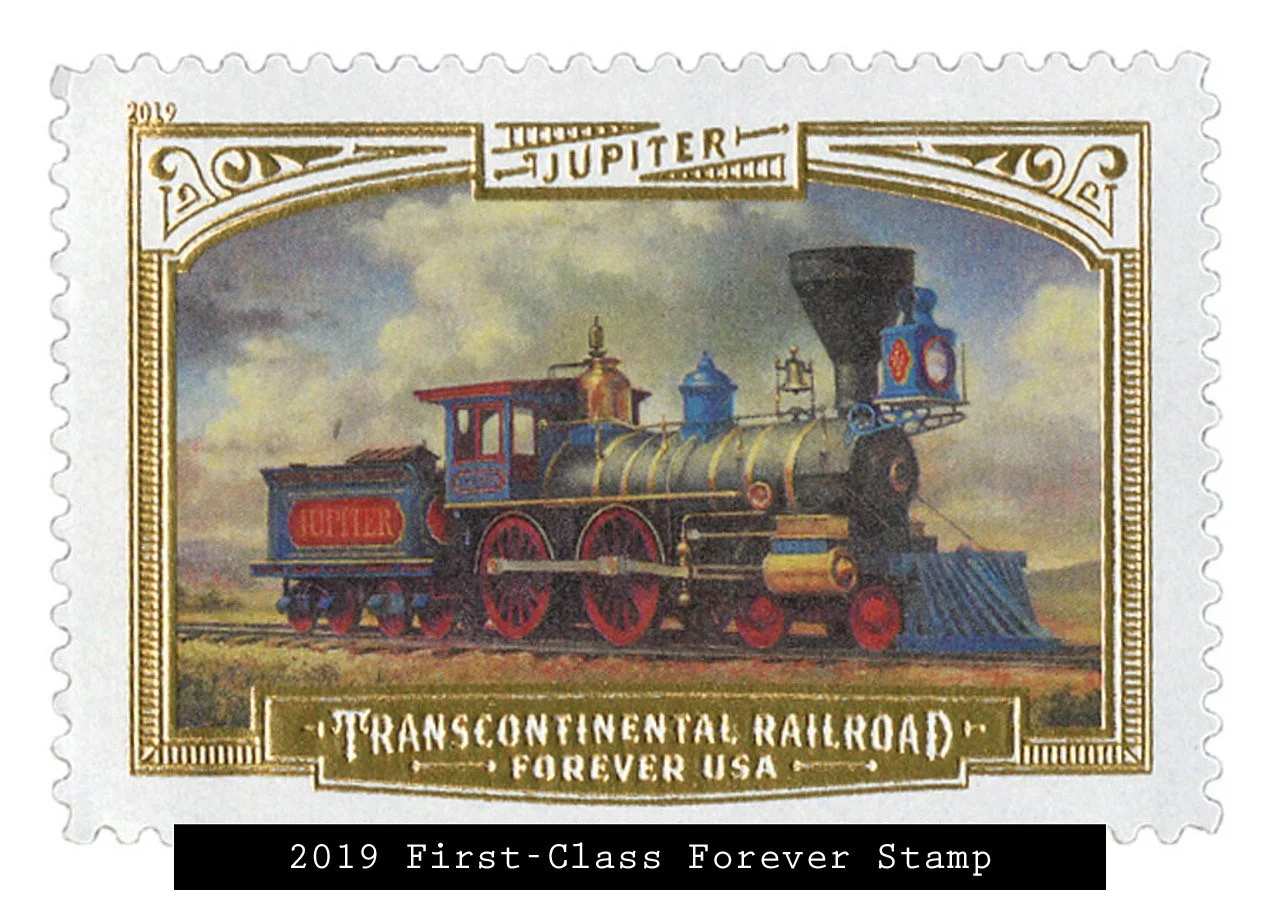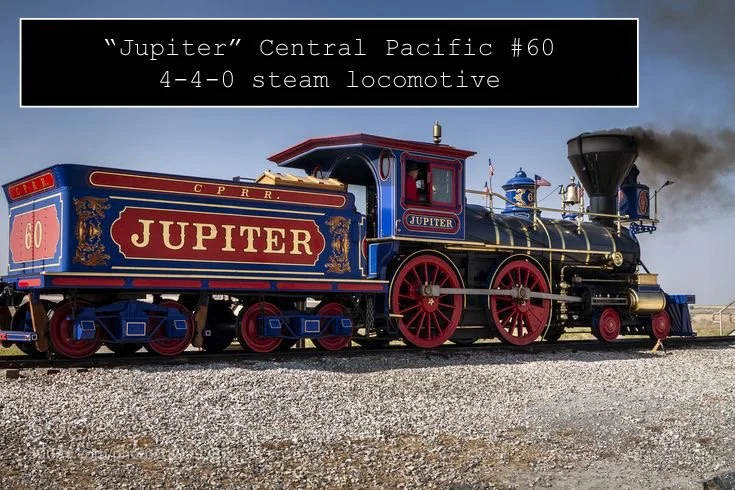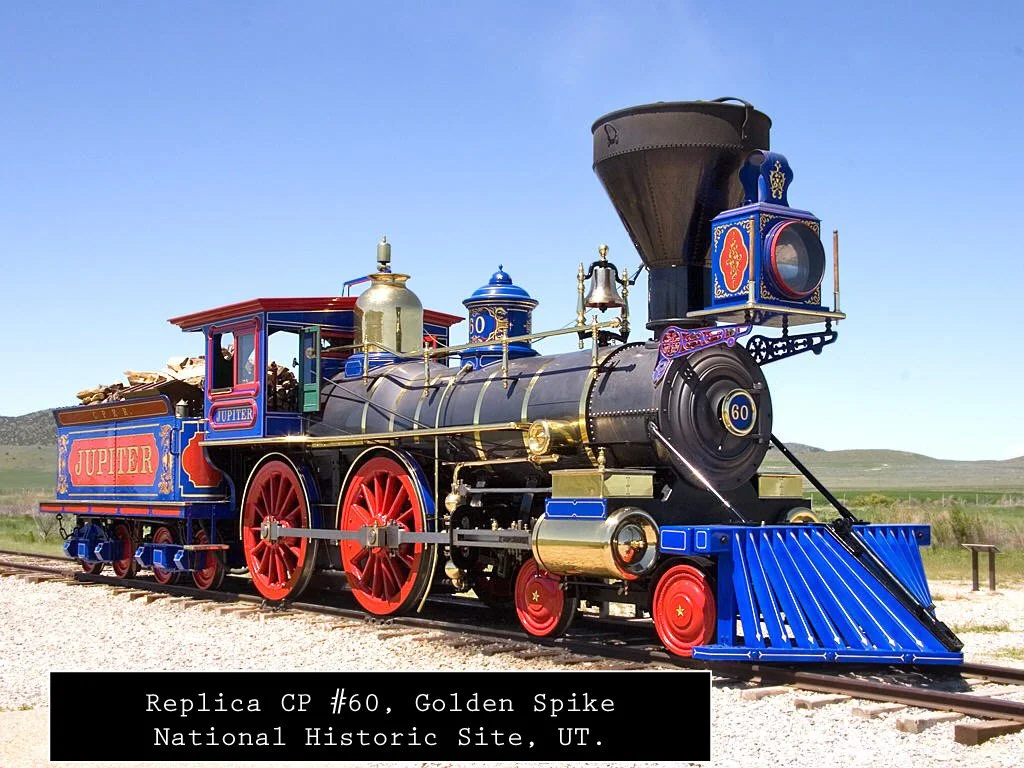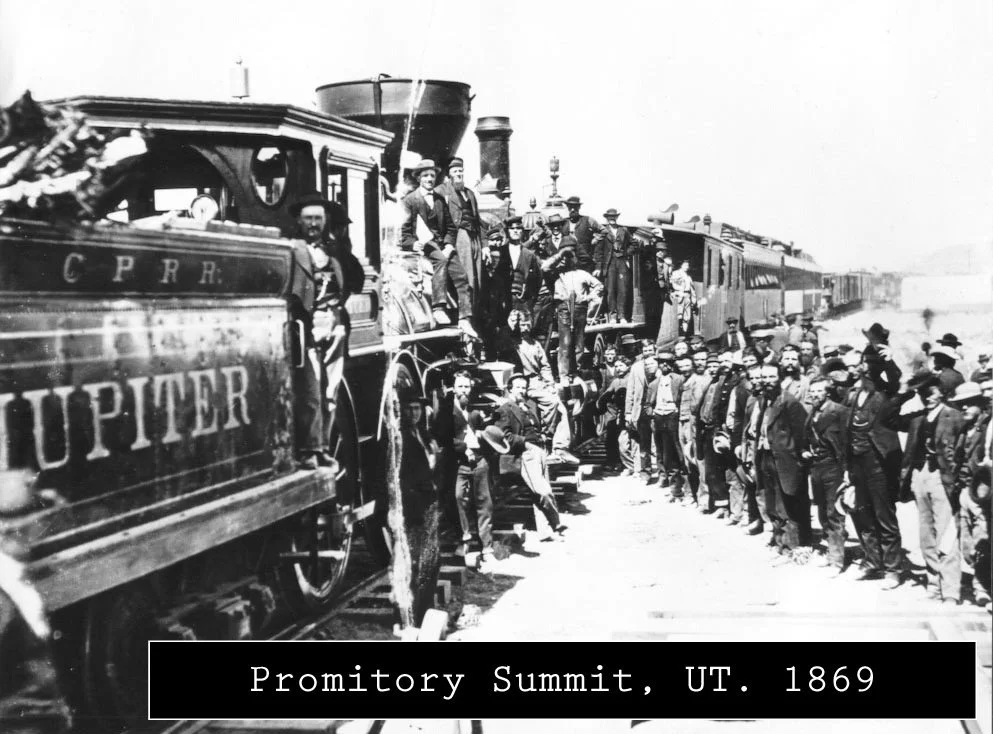The Jupiter: Connecting Coasts
I was inspired to write this post after being gifted this beaut of a collector’s knife from a wonderful friend!
Franklin Mint folding collectors knife
When Schenectady Locomotive Works put the finishing touches on what would become the Jupiter in 1868; the company had already 20 years of experience building units. In September of that year the Jupiter, dubbed as Central Pacific Railroad #60, was built alongside; CP #61 “Storm”, CP #62 “Whirlwind”, and CP #63 “Leviathan.” All of which were commissioned into service the following year in March and April 1869. The Jupiter specifically was assigned to Central Pacific’s Salt Lake Division to take part in the completion of the first transcontinential railroad. Making it’s way from Sacramento; the Jupiter would pick up the final leg of Central Pacific’s route east to the site of the Golden Spike Ceremony.
In post-celebration life, the Jupiter continued serving the Central Pacific Railroad under the CP#60 name. In 1885, the locomotive was acquired by Southern Pacific (renumbered as SP#1195) and by 1893 was converted to burn coal. Later that year, the unit was sold to the Gila Valley, Globe, and Northern Railway in Arizona. Only to wind up once again under Southern Pacific ownership in 1901 before the railroad sold the engine for scrap in 1909. Throughout the years reproductions have been built; most notably the replica located at Golden Spike National Historical Park. Featuring both the Jupiter and Union Pacific #119 reproduction units built in 1979.






